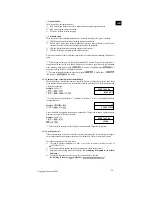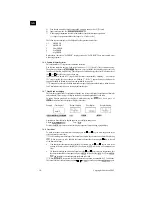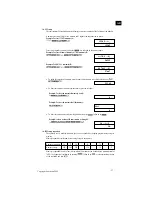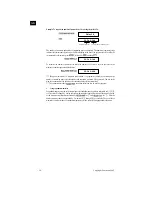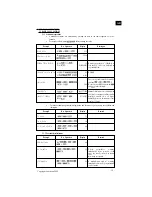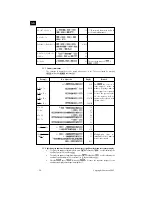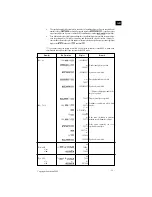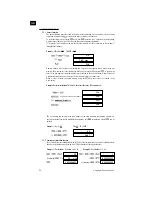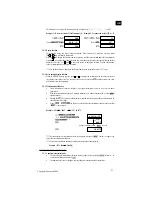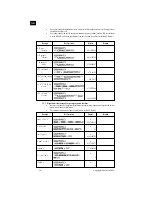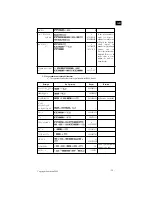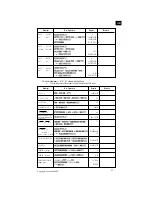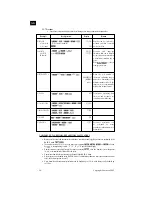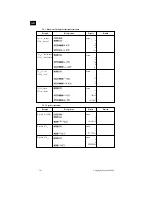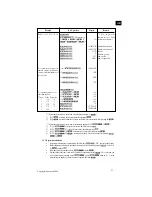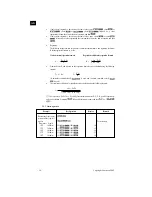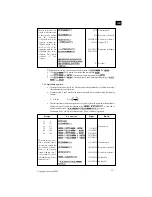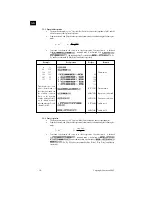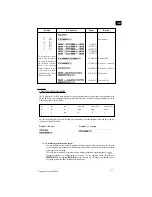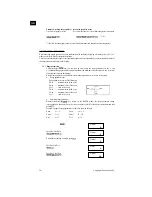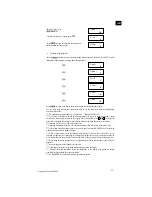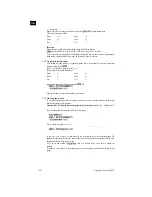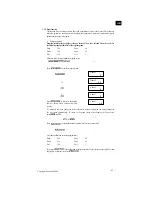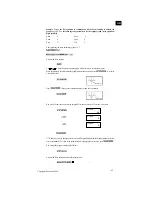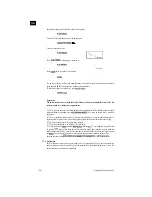
Number system
Number of digits displayed
Binary
Up to 12 digits
Octal
Up to 11 digits
Decimal
Up to 10 digits
Hexadecimal
Up to 8 digits
●
The total range of numbers handled in this mode is 0, 1, 2 , 3, 4, 5, 6, 7, 8, 9 , A, B, C, D, E, F. If values not
valid for the particular number system are used, attach the corresponding designator (b, o, d or h), or an error
message will appear.
Number system
Valid values
Binary
0, 1
Octal
0, 1, 2 , 3, 4, 5, 6, 7
Decimal
0, 1, 2 , 3, 4, 5, 6, 7, 8, 9
Hexadecimal
0, 1, 2 , 3, 4, 5, 6, 7, 8, 9 , A, B, C, D, E, F
●
Negative numbers in binary, octal and hexadecimal are expressed as two’s complements.
●
To distinguish the A, B, C, D, E and F used in the hexadecimal system from standard letters, they appear
as shown in the chart below.
Key
Display
( = )
/A
( = )
IB
( = )
IC
( = )
ID
( = )
IE
( = )
IF
●
Calculation range (in BASE-N mode)
Binary
Positive : 0111111111 >x> 0
Negative: 1111111111 >x> 1000000000
Octal
Positive : 1777777777 >x> 0
Negative: 3777777777 >x> 2000000000
Decimal
2147483647 >x> -2147483648
Hexadécimal
Positive : 7FFFFFFF >x> 0
Negative : FFFFFFFF >x> 80000000
●
You cannot specify the unit of angular measurement (degrees, radians, grads) or the display format (Fix, Sci)
while the calculator is in the BASE-N mode. Such specifications can only be made if you first exit the
BASE-N mode.
Copyright L
EXIBOOK
2002
- 29 -
GB
lA
lB
lC
lD
lE
lF
x
-1
°’ ‘’
sin
cos
Hyp
tan

